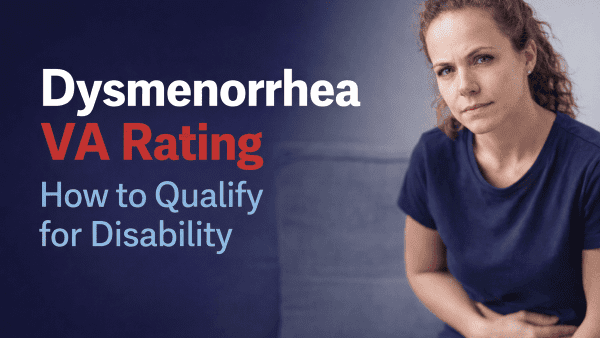Looking for Expert-Level VA Claim Answers?📱Call Us Now! 737-295-2226
If your service-connected disabilities make it hard to get through the day without help, you could be owed significantly more money from the VA—especially if you qualify for Special Monthly Compensation at the L or L1/2 level (SMC-L / SMC-L1/2).
Special Monthly Compensation at the L level (SMC-L) is designed for veterans who require assistance with daily living tasks, such as bathing, dressing, and eating. SMC-L1/2 offers an even higher benefit amount for veterans whose disabilities meet the L-level criteria plus additional severe conditions.
In this guide, we break down what SMC-L and SMC-L1/2 are, who qualifies, how much they pay monthly, and what to include in your claim so you don’t leave money on the table.
Table of Contents
Summary of Key Points
- SMC-L provides extra monthly compensation to veterans with severe service-connected disabilities who need help with daily living activities.
- You may qualify for SMC-L if you require regular Aid and Attendance, have loss or loss of use of extremities, or meet specific criteria under 38 CFR § 3.350.
- SMC-L1/2 is awarded when you meet the SMC-L criteria and have an additional qualifying condition, such as a 50% rated disability or other loss of use/amputation.
- The VA should automatically consider SMC-L during your disability evaluation, but if they don’t, you can file a claim to request this benefit.
What is SMC-L?
SMC-L is a level of Special Monthly Compensation awarded to veterans with severe service-connected disabilities who need regular help with daily tasks.
This level of compensation is typically granted when a veteran requires assistance with essential activities like bathing, dressing, eating, using the bathroom, or getting in and out of bed or a chair, which the VA refers to as “Aid and Attendance.”
Veterans may also qualify for SMC-L if they’ve anatomically lost or lost the use of a hand or foot, are blind in both eyes, or need constant care due to physical or mental conditions.
Note: Your SMC-L compensation replaces your standard VA disability pay, instead of being added to it.
Related Post: VA Special Monthly Compensation (SMC)
What is SMC-L1/2?
SMC-L1/2 is a slightly higher level of Special Monthly Compensation awarded to veterans who meet the criteria for SMC-L and have an additional serious disability. This can include a second service-connected condition rated at 50% or higher, or additional loss or loss of use of a limb or sense organ.
For example, if you qualify for SMC-L because you need regular aid and attendance and you also have another severe disability like a service-connected amputation or major mental health condition rated at 50% or higher, you may be eligible for SMC-L1/2.
This bump in compensation reflects the compounded impact of multiple serious disabilities and results in a higher monthly payment than the standard SMC-L rate.
What’s the Difference Between SMC-L & SMC-L1/2?
SMC-L is awarded for serious disabilities like anatomical loss or loss of use of both feet, one hand and one foot, blindness in both eyes with visual acuity of 5/200 or less, being permanently bedridden, or needing regular aid and attendance.
SMC-L1/2 is a step above SMC-L. You may qualify for SMC-L1/2 if you meet the SMC-L criteria and have additional serious conditions, like a combination of amputations, loss of use of limbs, blindness, or another permanent disability rated 50% or higher.
What is Aid and Attendance?
Aid and Attendance is a benefit that supports veterans who need help from another person to perform everyday tasks.
It’s often granted alongside SMC-L when the severity of a veteran’s condition requires regular assistance.
You may qualify for Aid and Attendance if you:
- Need help from another person to do daily tasks like bathing, eating, or getting dressed.
- Have to stay in bed most of the day because of an illness.
- Live in a nursing home because you’ve lost physical or mental abilities from a disability.
- Have very limited vision, even with glasses or contacts (for example, vision of 5/200 or less in both eyes, or very narrow side vision).
SMC-L Eligibility Requirements
You may qualify for VA SMC-L if any of the following apply to you:
- You’ve had both feet amputated, or
- You’ve had one foot amputated, and have lost the use of the other foot, or
- You’ve had one hand and one foot amputated, or
- You’ve had one foot amputated, and have lost the use of one hand, or
- You’ve had one hand amputated, and have lost the use of one foot
Or:
- You’ve lost the use of both feet, or
- You’ve lost the use of one hand and one foot
Or:
- You’ve lost sight in both eyes (blindness), or
- You’re permanently bedridden, or
- You need daily help with basic needs (like eating, dressing, and bathing)
Did you know? “Loss of use” means a body part no longer functions, even if it hasn’t been amputated.
SMC-L Pay Chart
As of 2025, the basic SMC-L pay rate for a veteran with no dependents is $4,767.34 monthly. If you have a spouse, children, or other dependents, your monthly amount may be even higher.
Here’s an overview of basic SMC-L and SMC-L1/2 pay rates:
| Dependent Status | SMC-L Pay Rate | SMC-L1/2 Pay Rate |
| Veteran with No Dependents | $4,767.34 | $5,014.00 |
| Single Veteran with 1 Child | $4,910.19 | $5,156.85 |
| Single Veteran with 1 Parent | $4,938.78 | $5,185.44 |
| Veteran with Spouse | $4,980.95 | $5,227.61 |
| Single Veteran with 2 Parents | $5,110.22 | $5,356.88 |
| Veteran with Spouse/1 Child/1 Parent | $5,308.83 | $5,555.49 |
| Veteran with Spouse/1 Child/2 Parents | $5,480.27 | $5,726.93 |
Note: If you have multiple children or a spouse receiving Aid and Attendance, you’ll receive additional compensation on top of your base SMC-L rate.
View All Current SMC Compensation Rates
How to Apply
The VA is supposed to grant SMC automatically if you meet the requirements, but that doesn’t always happen.
Before filing a new claim, you should review your most recent decision letter to see if SMC was mentioned.
If it’s not, you can apply for SMC-L:
- Online at VA.gov (add a new disability type “Request for Special Monthly Compensation), or
- By mail using VA Form 21-2680, or
- In person at the nearest VA regional office
What to Include When Applying
When applying for SMC-L, be sure to include clear evidence that demonstrates your need for regular assistance with daily tasks.
This can include:
- VA Form 21-2680 completed by your physician
- Personal statements from you or caregivers describing your daily challenges
- Medical records supporting the severity of your disability
Conclusion
If you have severe service-connected disabilities that require daily assistance, you may qualify for SMC-L or even SMC-L1/2—two of the most valuable Special Monthly Compensation tiers awarded by the VA.
Understanding the eligibility criteria, gathering strong medical evidence, and knowing what to include in your claim could make a major difference in your monthly compensation.
Even if the VA hasn’t awarded SMC automatically, you have every right to request a review and apply. Remember: YOU SERVED. YOU DESERVE.
Want Expert-Level Support for Your VA Disability Claim? WE GOT YOUR SIX!

- VA Claims Insider is the #1 most trusted name in VA disability claims.
- Work directly with a VA claims coach who can educate you to VA claim victory.
- 25,000+ disabled veterans have served in our membership programs since 2016.
- 30% average rating increase for veterans who complete our #1-rated Elite program.
- 4.7/5.0 average rating out of 5,500+ total reviews; over 4,500 5-star reviews.
FAQs| Frequently Asked Questions
What is the difference between SMC-L and Aid and Attendance?
Aid and Attendance is a benefit often paired with SMC-L that provides additional compensation for veterans needing help with daily activities.
Can you get SMC-L for PTSD?
Yes, you may qualify for SMC-L for PTSD if your symptoms are so severe that you need regular aid and attendance from another person for daily activities like bathing, dressing, or managing medications. The VA will consider how much your PTSD limits your ability to function independently.
How much is SMC-L?
As of 2025, SMC-L pays qualifying veterans with no dependents $4,767.34 monthly. That amount increases based on the number of eligible dependents.
Can I get SMC-L and VA disability?
No, your SMC-L monthly payment replaces VA disability.
Who qualifies for SMC-L1/2?
To qualify for SMC-L1/2, a veteran must first meet the criteria for SMC-L—such as needing regular aid and attendance or having specific loss or loss of use of extremities—and also have an additional service-connected disability that is independently rated at 50% or higher, or another qualifying anatomical loss or functional impairment.
What’s the difference between SMC-L and SMC-L1/2?
SMC-L is awarded to veterans with serious service-connected disabilities who need regular aid and attendance or have specific types of loss or loss of use. SMC-L1/2 is a slightly higher tier of compensation given when a veteran qualifies for SMC-L and has an additional severe disability—such as another service-connected condition rated at 50% or more, or additional loss of use of limbs or sensory function. This bump reflects the compounded impact of multiple debilitating conditions.
How much more does SMC-L1/2 pay compared to SMC-L?
As of 2025, SMC-L pays a base rate of $4,767.34 per month for a veteran with no dependents. SMC-L1/2 increases that base to $5,014.00, reflecting the higher level of disability. If you have dependents, the monthly compensation rises even more. This extra monthly compensation can make a substantial difference—especially for veterans who require advanced caregiving or support due to multiple severe disabilities.
Can family caregivers receive compensation under SMC-L?
No. SMC-L provides compensation to the veteran for their disability and care needs, but it doesn’t include direct payments to family caregivers.
Author

Kelly Olone
Kelly Olone is a military spouse who earned her degree in Psychology from Florida International University. After working in the non-profit sector for several years, she turned to her passion for writing. She aims to contribute to a better understanding of the valuable benefits that veterans deserve. As a mom, Kelly navigates the delicate balance between deadlines and bedtime stories with finesse.



